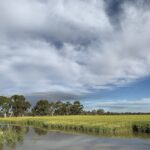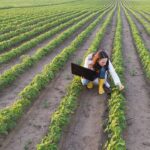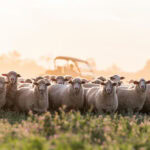The management of the state�s water resources is without doubt a highly complex process. Even…
Water and walnuts with the Hermanns
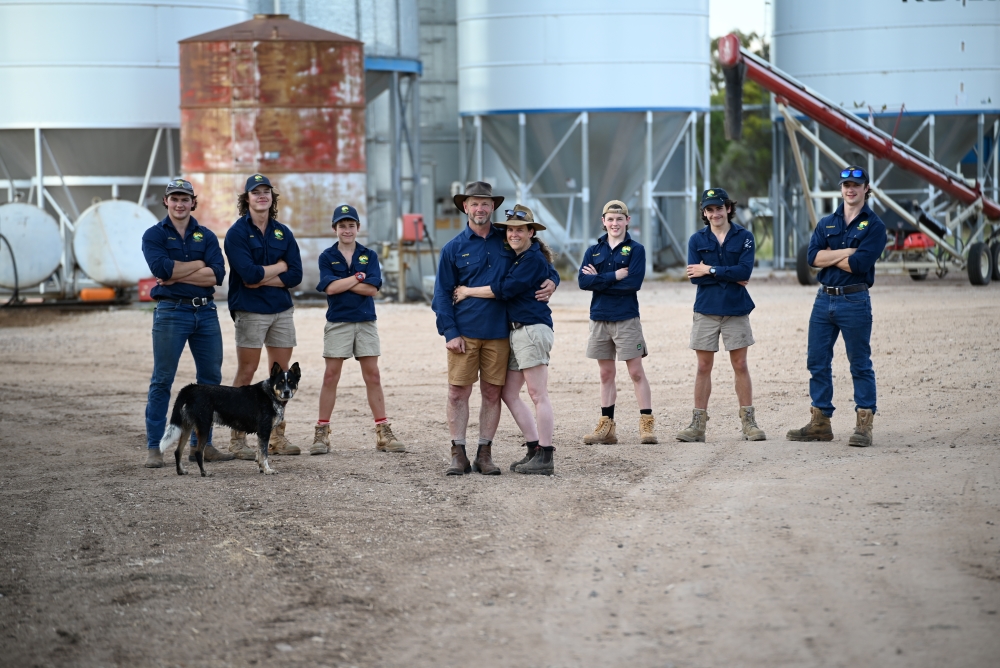
Peter and Katherine Herrmann are forging another century of farming in the Riverina for their six sons through innovations in water use efficiency and a bold move to plant 135,000 walnut trees.
Peter�s family has farmed in the Yanco and Murrami district since the Murrumbidgee Irrigation Area (MIA) was established in 1912. The farming journey started with rice cropping, which continues to this day alongside cereal cropping and 4000-strong flock of Merino-cross sheep.
With the help of their six keen young farmers, the Herrmann�s continue to invest in improving rice, wool and lamb production as staples in the farming mix.
Peter said Australian rice had become increasingly important for overseas markets in a world still reeling from inflation and supply chain issues,
“The world wants our rice,” Peter said.
“We exported rice to California last year. Our markets in the middle east and Europe are also calling for our rice, and the strong rice price reflects that demand.”
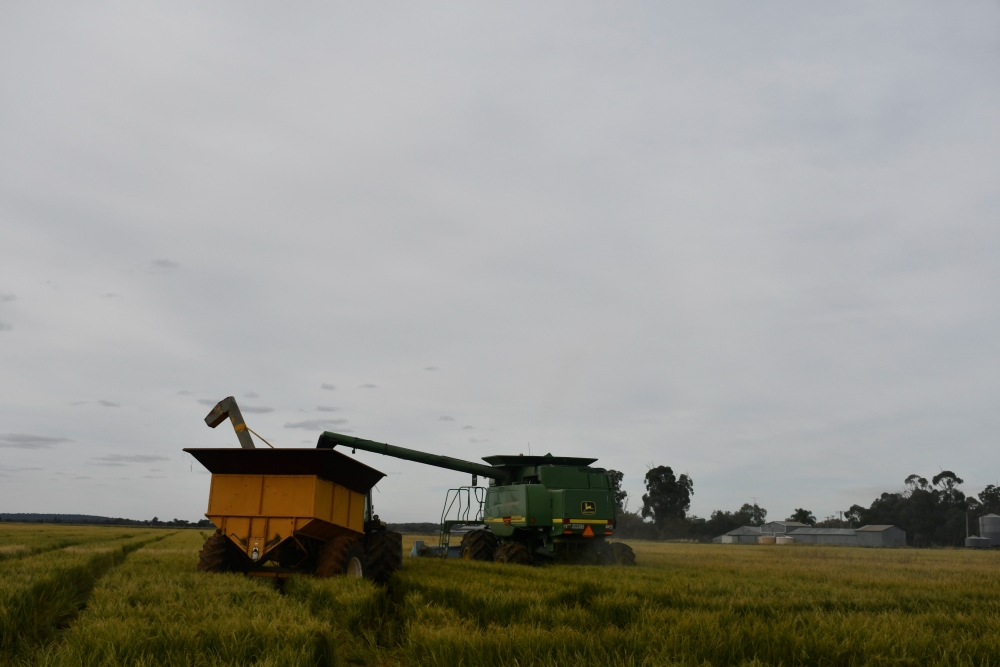
Peter, who is president of the Ricegrowers Association of Australia, said despite the wet conditions last year, Riverina farmers are tipped to meet that demand with a bumper harvest in April.
�We sowed 80 hectares of rice on our farm in the first week of October. The weather conditions precluded us from putting in more in within the planting window.�
�It�s a medium grain variety and despite the late start, the crop looks terrific and it will be a good harvest. We are pinning our hopes on an above average harvest of up to 14 tonnes per hectare.
�The varieties that we have available to us now means rice is one of the few summer crops that can take advantage of later sowing windows.�
A big fridge and walnuts
Raising six sons meant having a big fridge and a plan to diversify the farm business to secure a sustainable future of local food and fibre production.
The fridge was affordable, but Peter and Katherine�s idea to venture into a commercial walnut orchard in 2015 required outside capital and investors.
�Katherine and I explored a number of options to diversify the farm business, keeping in mind that it had to be the best and most efficient use of our water,� Peter said.
�Walnuts came out on top. They don�t need a pressurised irrigation system and respond to a surface capillary irrigation system.
�It�s particularly effective with walnuts and their type of root system in our country. It�s all gravity fed, so we are also reducing our carbon footprint in terms of energy use.�

The Herrmann�s undertook soil amelioration with cropping regimes and gypsum before planting the trees. The orchard�s soils are regularly topped up with chicken manure from nearby poultry farms and gypsum.
Peter said the trees have flourished and produced their first commercial crop of walnuts in 2021, yielding 130 tonnes.
There are now 135,000 trees spread across 580 hectares that Peter hopes will yield 3000 tonnes annually when in full production, making it the second largest walnut orchard in Australia behind one of their neighbours, Stahmann Webster.
Peter said a secure and efficient water supply has been key to the success of the Duxton Nuts plantation.
�We needed a modern irrigation system that was recordable � so we can pull out a spreadsheet and say, �here�s what�s been applied and how�,� says Peter.
�We also needed benchmarks and institutional-grade reports on our walnut production to provide to investors.�
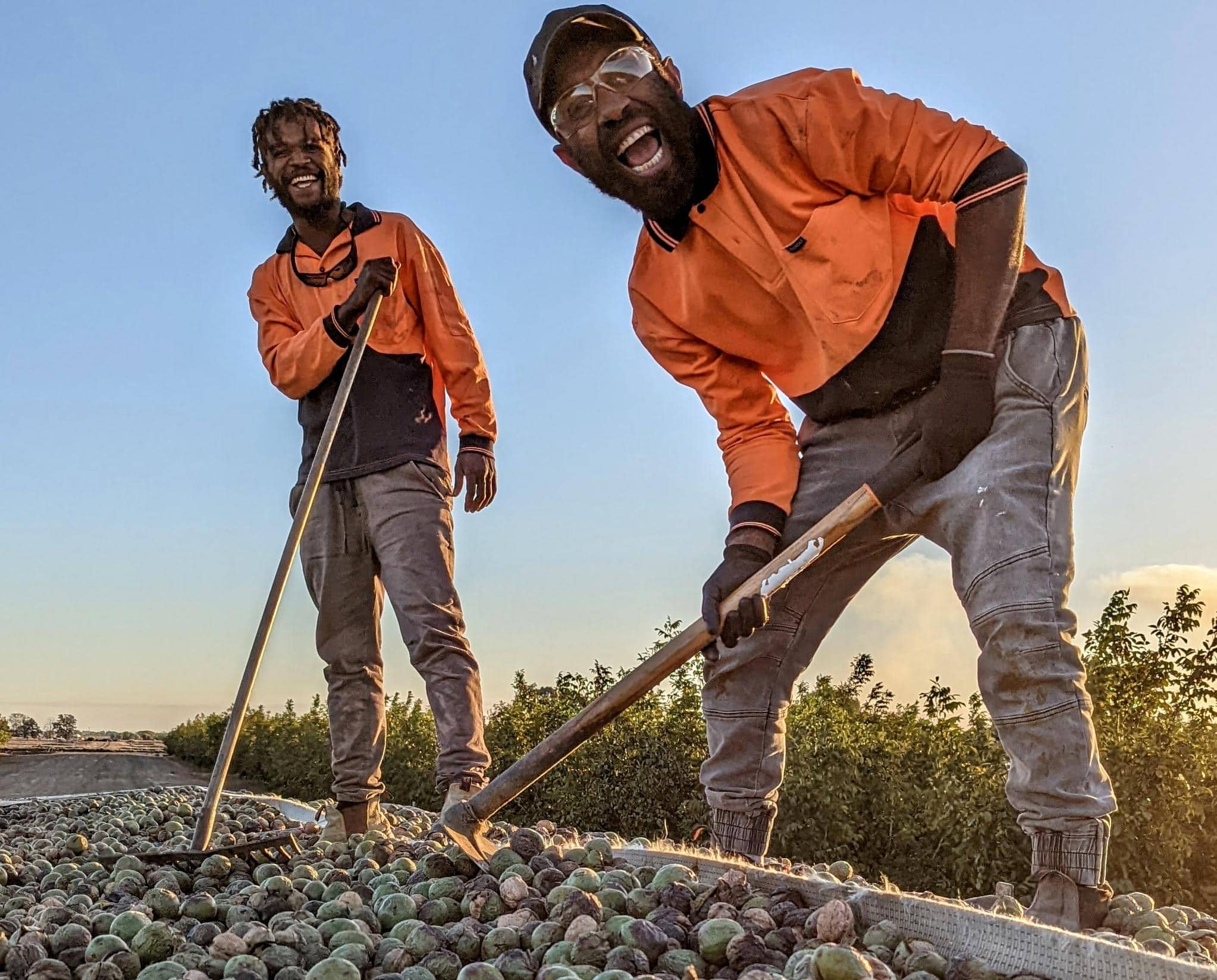
The Herrmann�s partnered with Murrumbidgee Irrigation (MI) to develop the reliable, recordable, and controllable supply of water to the walnut trees, and introduced automated irrigation technology.
�It is mostly operated remotely. The technology and equipment we have today really maximises water use efficiency.�
�We are one of the few horticultural enterprises that operate on this type of irrigation systems.�
Another step towards the new enterprise involved rationalising water titles. MI worked with the family to address the odd-shaped blocks dating from soldier settlement days, resuming MI easements and unused channels.
�It�s impossible to offer production security without that reliable supplier of water. We had to be investor ready for the family businesses that were buying into our business.�
Almost 40 Australian Family Offices have invested in �Duxton Nuts�. Peter and Katherine remain the largest shareholders, and are Operations Managers and Directors in a professional team.
�The investors are real people with real families who have a vested interest in what we are doing, and that has allowed us to grow. It�s something we are very proud of.�
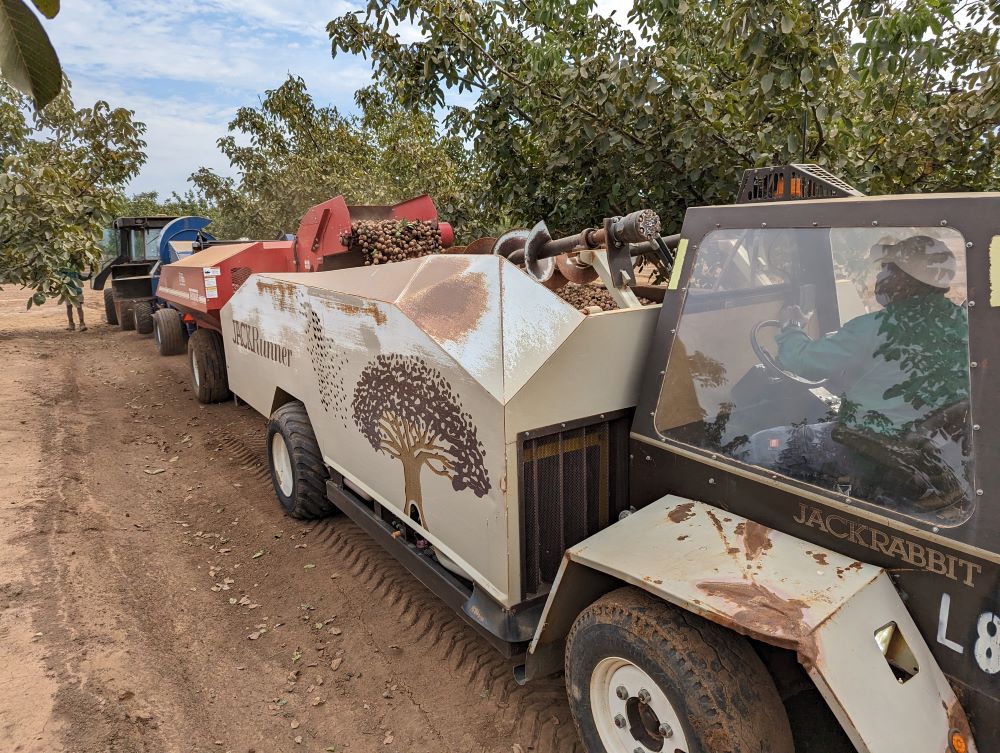
�Our nuts are all for import substitution and sold domestically. We have a fantastic offtake partner who is a food manufacturer.
Peter said the investors and a marketing partner have added a bunch of new skills in running a diversified farm business.
�Some of the business planning and decisions needed that next level of professionalism to look at risk versus rewards. We have come up with things that we never dreamed would be achievable.�
�There was a lot of unknowns when it started. It has been a real team effort to get I to where it is today, and we found some lifelong friends along the way.�
Peter Herrmann
Katherine said it is exciting to add a fledgling horticultural crop in Australia to the mix of more traditional Riverina farming products like rice and wool.
�Adapting walnuts into our climate, the genetic material we are working with and the innovations that have gone with it have made it a really exciting journey,� Katherine said.
�Like any new crop, there is growing pains in getting to scale. There were some barriers to getting into the industry, but we partnered with a wholesale nursery to get the right varieties.�
�The trees spoke for themselves after that. We could see the trees had the will to grow, so we put everything we had behind it. You do cross your fingers and toes for the first four or five years waiting for the first crops.
�Now they are thriving thanks in big part to the irrigation system and chicken manure.�
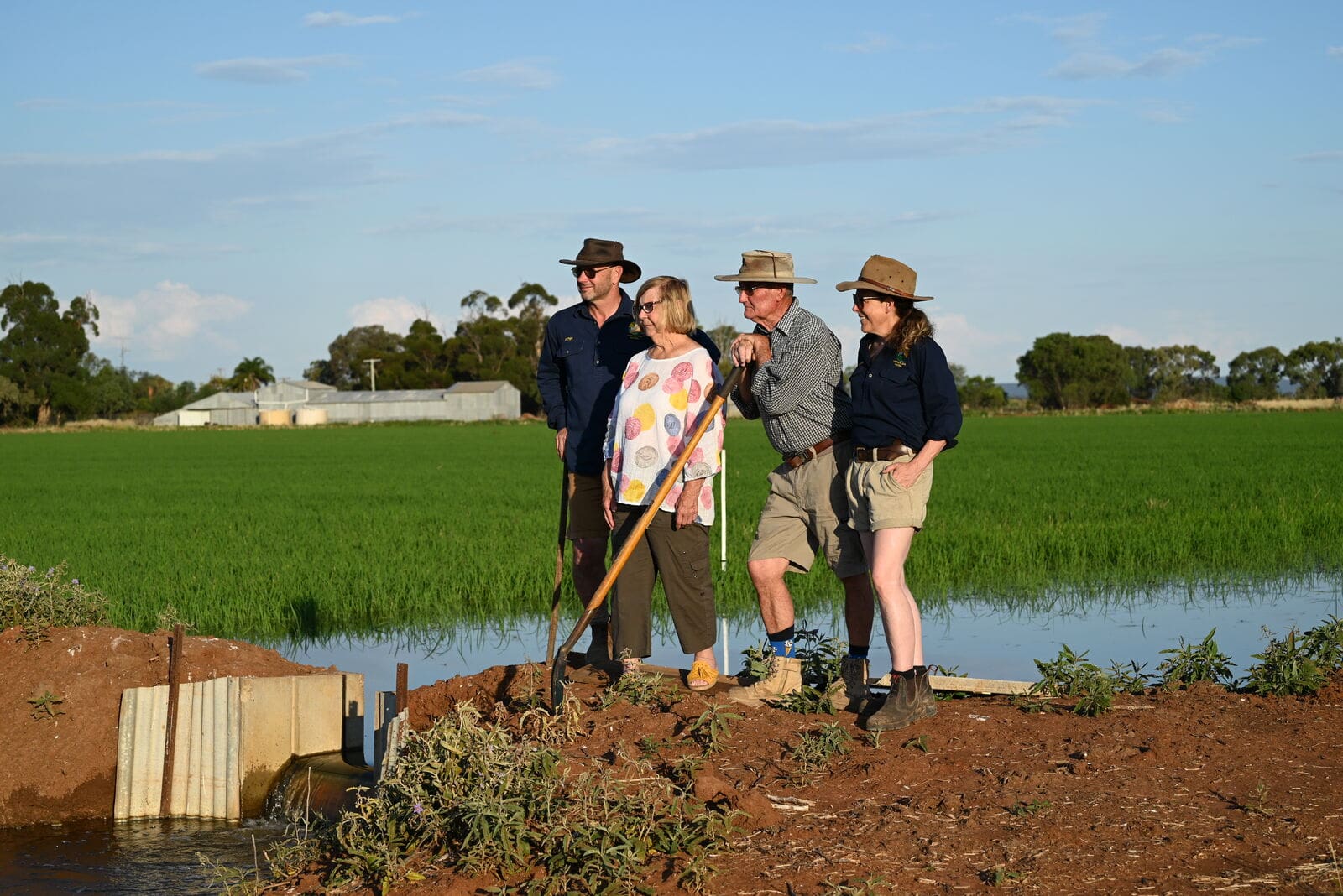
With almond plantations going nuts in the Riverina, Katherine said it was tempting to enter a more established industry with quicker returns.
�The walnut is a more interesting tree. It can last for over 100 years compared to 15 to 20 years for an almond tree. It�s one of the oldest food sources for humans and the nuts are really good for our gut flora.�
Australia�s walnut farms accounts for less than 1% of global walnut supply, with US and China dominating production. With global demand increasing, Katherine said there is a growing need for year-round supply from counter-seasonal regions in the Southern Hemisphere.
The walnut harvest does clash with the rice harvest, which makes for busy times on the Hermann�s farm in April.
�We love an autumn harvest. It�s a spectacular time of year in the Riverina.�
Katherine Herrmann
�For the walnuts, most of the hard work is done in preparing for harvest through pruning and irrigation. There is a lot of work involved in the early years getting the tree structure right with pruning. It�s like raising children- get it right early on and they become self-sufficient quicker.�
Walnut harvesting is mechanised at Duxton Nuts and involves shaking the trees and the sweeping the nuts up.
Adding a more labour-intensive crop to the farm business was a risk, but Kathleen said a �shared vision� with employees has developed a secure workforce and a harmonious working environment.
She said staff have been key the farm�s success, including families from Vanuatu employed through Pacific Island workers scheme that are accommodated on farm.
�The staff have been on the same journey as us in learning about a new crop. Its collaborative, which results in a productive relationship.
�The families from Vanuatu that we have stay are very proud of what they have achieved, as we are. They are really excited about the opportunity to learn. Some of them are now operating complicated machinery and automated irrigation equipment.�
The next generation
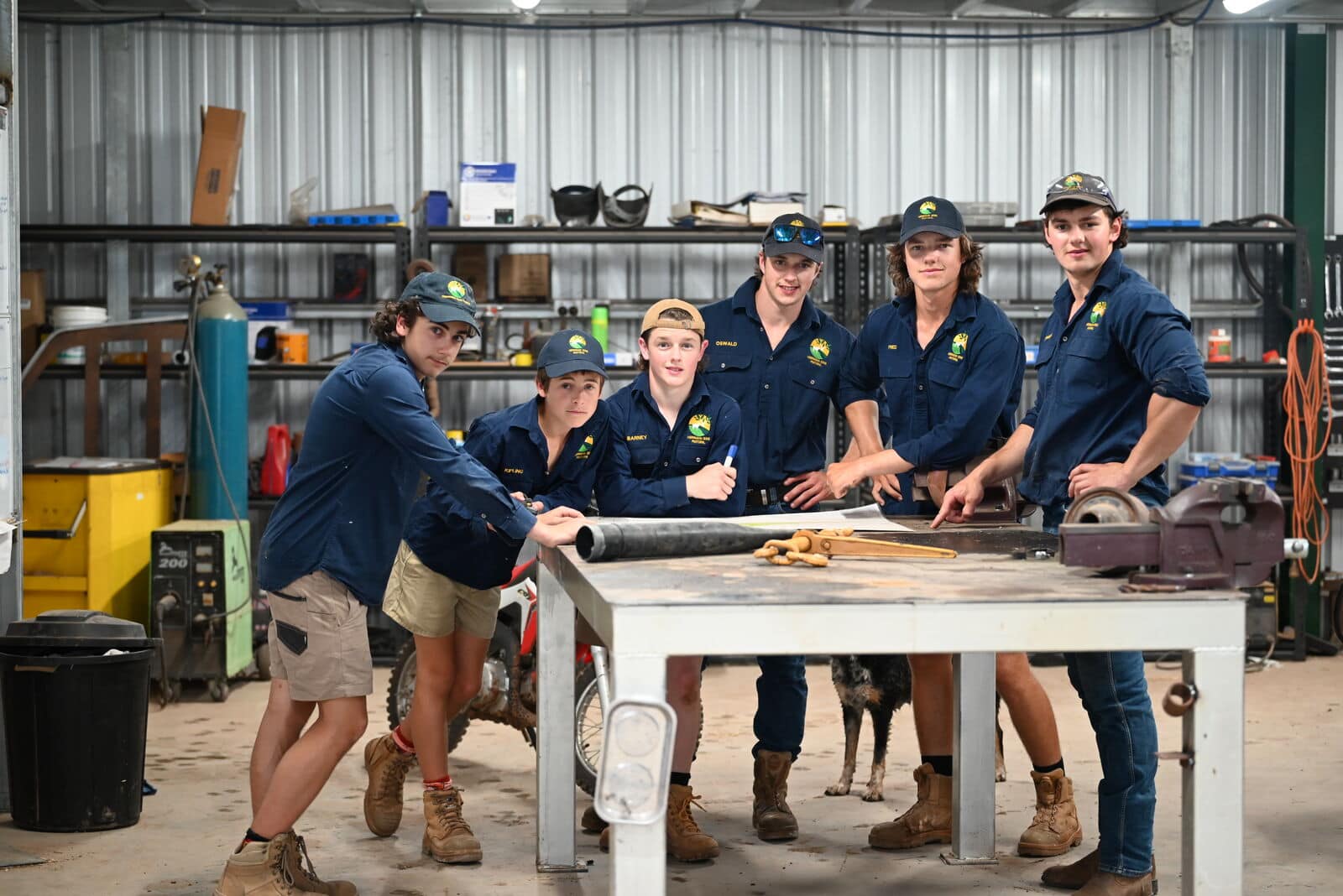
Katherine and Peter also have a small army of six sons aged 14 to 21 that all chip in on weekends. Oswald (21) is a qualified fitter machinist, Stanley (20) and Fredrick (19) are completing apprenticeships and Indigo (16), Peter (15) and Kipling (14) are at school.
�They all love coming home and how we are working with our environment. They all have the potential to contribute to agriculture, whether it be through innovation, engineering or even robotics if they want to,� Katherine said.
Eldest son Oswald, who is a fitter and machinist at Collier & Miller in Griffith, confirmed his love of life on the land at Murrami during the week and a farmer on weekends.
�All of us boys do volunteer for it on the weekends. It�s great, I wouldn�t have it any other way,� Oswald said.
�You are never short on things to do, and the freedoms of being on the farm gives you the opportunity to create and do want you want.�
Oswald�s welding and machining skills were put to the test this year with the construction of new sheep drafting yards, containment feeding infrastructure for finishing lambs and upgrades to the shearing shed.
�There was plenty of welding in all that. We�re always making something or fixing something up on the farm. That�s why I see myself as a farmer in the future.�
Oswald Herrmann
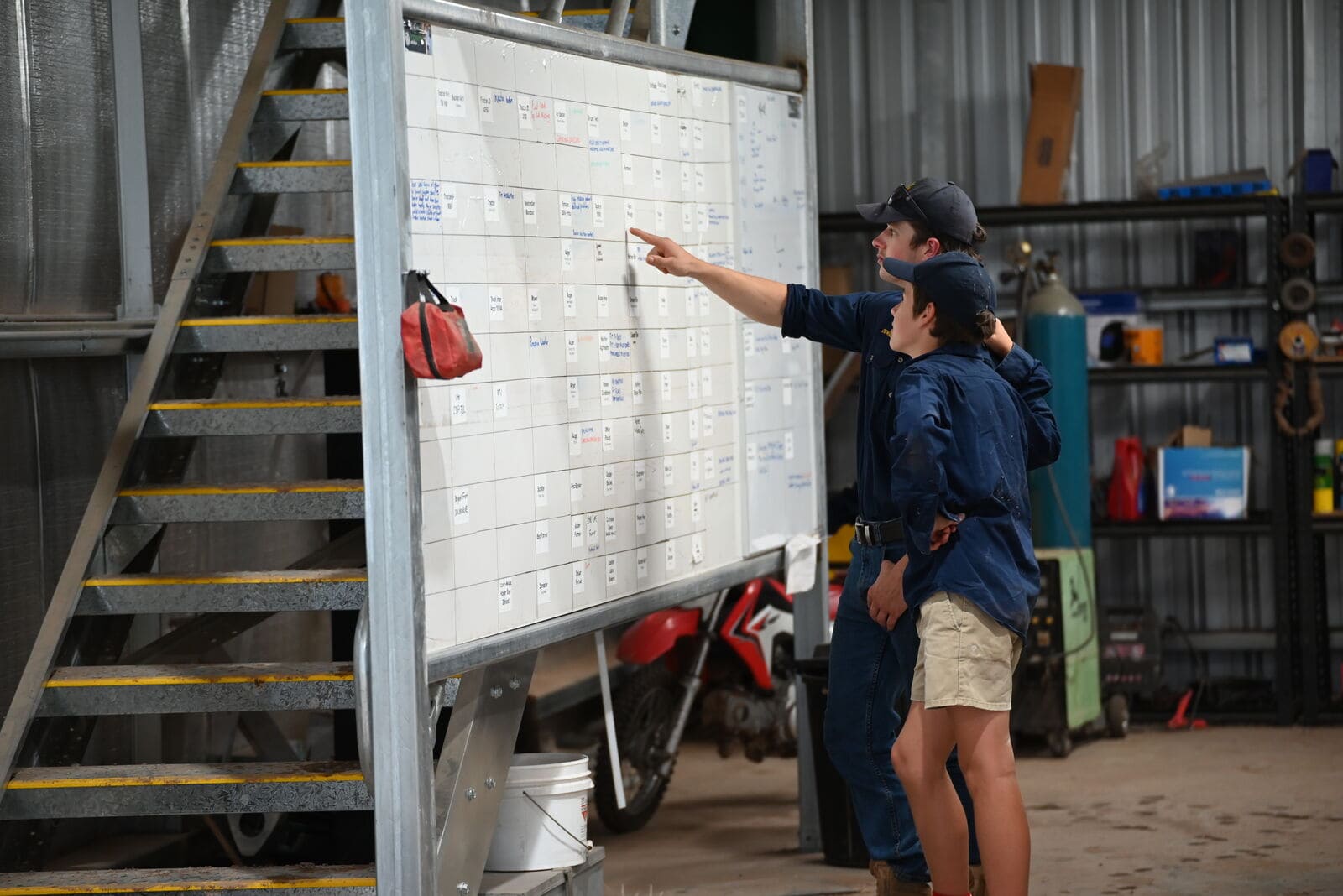
Brother Stanley also boasts welding skills that are utilised on farm. Stanley is completing a fitter machinist apprenticeship in Albury and travels home on weekends.
�You do get a couple of weekends off every now and then. There has not been too many lately with the building of new yards and extensions to the shearing shed.�
�We get some work done when we are all home, that�s for sure.�
Stanley said he is also eyeing off a future life as a farmer.
�One of the reasons I am doing the trade is the aim of going back onto the farm one day with all mechanical and advanced machinery skills I need to run a successful business.�
Read about the growing hazelnut industry in NSW here.


